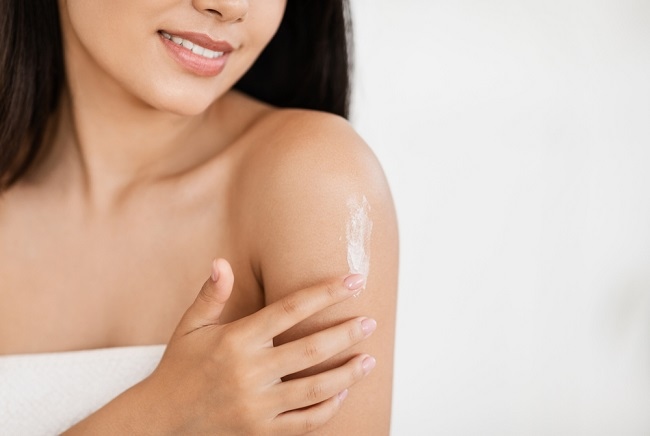Hyperkeratosis is a condition when the skin thickens. This condition can appear in certain parts of the body, such as the soles of the feet, or spread throughout the body. Some causes of hyperkeratosis are generally harmless. However, this condition can also be caused by a serious skin disease and needs to be treated immediately.
The outermost layer of the skin or epidermis is composed of 5 layers. The outermost part or layer of the epidermis is called the stratum corneum. This layer is made of keratin, a dense protein that protects the skin from harmful substances and infections.

Under certain conditions, the production of keratin in the skin layer can be excessive and cause the skin layer to thicken. This thickening of the skin layer due to the buildup of keratin is called hyperkeratosis.
Causes and Characteristics of Hyperkeratosis
There are many things that can cause skin to develop hyperkeratosis, including:
- Excessive friction or pressure on the skin
- Irritation to the skin, for example from exposure to chemicals or pressure on the skin
- Genetic disorders
- Inflammation
- Infection
- Sun exposure
This thickened skin condition is generally not accompanied by pain or itching. However, in certain cases, the condition of hyperkeratosis can make the sufferer feel uncomfortable.
Various Examples of Hyperkeratosis Conditions
The following are some forms or examples of diseases that can cause hyperkeratosis:
1. Calluses
Calluses can occur on areas of the skin that are frequently rubbed or pressured. Calluses most commonly occur on the palms of the hands, soles of the feet, and heels. Callused skin will usually feel rough, dry, and cracked, which is accompanied by pain if the calluses get thicker.
2. Eczema
Eczema or dermatitis is an inflammatory skin condition that causes the skin to become red, itchy, cracked, and sometimes blisters appear. If it lasts long enough, the inflammation of the skin can cause thickening of the skin or hyperkeratosis.
3. Warts
Warts are bumps on the skin that appear due to infection human papillomavirus (HPV). Warts can grow on any part of the body, including the soles of the feet, which can cause discomfort when walking or walking.
4. Actinic keratosis
Actinic keratoses or solar keratosis are rough, reddish patches on the skin that often appear after sun exposure. This condition has the potential to cause cancer and needs to be checked by a doctor immediately.
5. Lichen planus
Lichen planus is an autoimmune disease that can affect the skin and mucous membranes, such as the lips, mouth, and vagina. This condition is more common in adults over the age of 40.
The condition of hyperkeratosis due to lichen planus is characterized by a small, purplish red rash that sometimes feels itchy. Meanwhile, in mucosal areas, such as the mouth or vagina, this disease is characterized by white patches that are sometimes painful.
6. Seborrheic keratosis
Seborrheic keratoses are small, dark patches that are noncancerous. These patches of skin usually appear on the face, arms, and legs. Seborrheic keratosis often occurs in adults, especially the elderly.
7. Epidermolytic hyperkeratosis
Epidermolytic hyperkeratosis is a congenital condition. This type can be seen since the baby is born with symptoms of skin redness and blisters. This condition will generally be experienced by the sufferer for life.
8. Keratosis pilaris
Keratosis pilaris is a hyperkeratotic condition caused by too much protein in the skin. This condition is usually characterized by a rash or reddish and brownish spots accompanied by dry skin.
Keratosis piliaris often appears on the arms, buttocks, or legs and can be experienced by anyone, especially children.
9. Psoriasis
Psoriosis is characterized by a rash or red patches and skin that feels dry, thick, scaly, peels easily, and sometimes accompanied by pain or itching. Psoriasis is more common in the knees, elbows, lower back, and scalp.
Some types of hyperkeratosis are generally harmless, but some can develop into cancer. Therefore, you need to immediately see a doctor if there are abnormalities in the skin, such as growing lumps, appearing spots, or the presence of abnormal skin tissue.
After the doctor determines the diagnosis and confirms the cause of the hyperkeratosis you are experiencing, the doctor will provide treatment according to the cause and type of hyperkeratosis.
To improve your skin condition, your doctor may advise you to use skin care products or mild chemical soaps, avoid wearing uncomfortable footwear, and use ointments or ointments regularly.
In order not to get hyperkeratosis, you are also advised to avoid exposure to the sun for a long time or regularly use sunscreen to protect your skin from the dangers of the sun.
In certain cases, the doctor may suggest surgical treatment of hyperkeratosis, especially in hyperkeratosis conditions that have the potential to develop into cancer.









